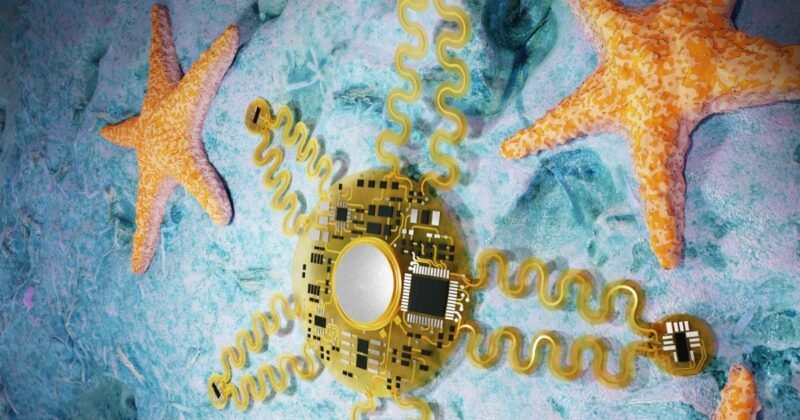Quick Takeaways
-
Innovative Design: Scientists at the University of Missouri have created a starfish-shaped wearable device that measures heart rate in real-time, using multiple sensor connections to overcome common motion-related inaccuracies in traditional heart rate monitors.
-
Enhanced Diagnostic Accuracy: This device combines electrocardiogram and mechanical heart activity signals, achieving over 91% accuracy in detecting serious heart conditions like atrial fibrillation, myocardial infarction, and heart failure—surpassing existing technologies.
-
Wireless and Convenient: The heart rate sensor features real-time Bluetooth data transmission for remote monitoring by health experts and utilizes wireless charging, allowing it to operate underwater and while being worn.
- User-Friendly Features: Equipped with an onboard rechargeable battery providing up to 8 hours of measurement, the device promises reduced charging hassles by working with available chargers and maintaining functionality during use.
Nature Comes to the Rescue, Again
Recent advancements in wearable technology have transformed our understanding of health monitoring. Users can track heart rate, blood oxygen levels, and more. However, these devices face significant challenges. For example, movement during exercise can distort readings. Additionally, some sensors struggle to deliver accurate results for individuals with darker skin tones or tattoos. Researchers at the University of Missouri have drawn inspiration from nature to tackle these issues. They developed a starfish-shaped device that measures heart rate in real-time. This innovative design uses multiple sensor points to maintain accuracy even during physical activity. The unique arm structure of the device allows it to capture simultaneous heart signals. As muscle movements change, the device adapts, offering a solution to previous limitations.
Immense Promise for Cardiac Wellness
The starfish-like device holds immense potential for cardiac health. It can collect a variety of signals, including electrical and mechanical heart activity. Researchers employed machine learning to enhance the performance of the device. The results speak for themselves; the device can accurately detect critical heart conditions like atrial fibrillation and heart failure. These capabilities exceed those of current consumer wearables. Furthermore, this technology allows for real-time monitoring via Bluetooth, enabling healthcare professionals to access vital data remotely. Users no longer need to charge their devices frequently. The built-in rechargeable battery offers up to eight hours of operation and supports wireless charging. As developers plan to enhance user comfort with breathable materials, we glimpse a future where wearable sensors seamlessly integrate into daily life. This innovation not only promises improved health monitoring but also reflects humanity’s enduring quest for technological advancement.
Stay Ahead with the Latest Tech Trends
Explore the future of technology with our detailed insights on Artificial Intelligence.
Discover archived knowledge and digital history on the Internet Archive.
TechV1

